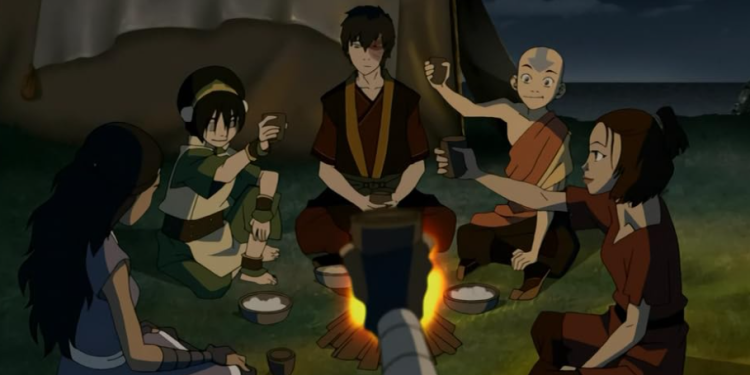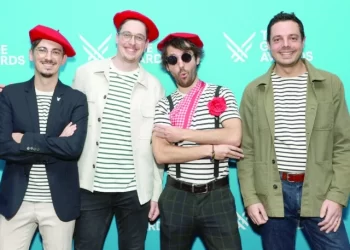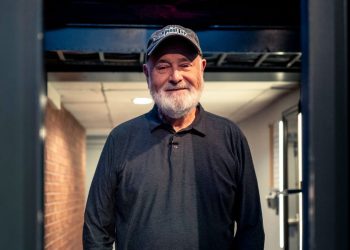Subplots take various shapes in fiction, with romance usually being a top contender in most media forms. Without an additional layer adding flavour to a film or show, the art piece is denied an introspective exploration of this complex phenomenon we call “humanity”. One of our favourite supplements is the found family—a trope safely treading the fine line between romantic love and biological attachment.
When you think of Avatar: The Last Airbender, a tattooed 12-year-old monk isn’t all that comes to mind. Sure, having unique abilities and incomparable struggles makes Aang the heart of the show, but there’s much else that fills his heart and ours with light. If our war-stricken Avatar hadn’t built a family along the way, this nostalgic series would be far more depressing than you remember it to be.
Without Katara’s skills and guidance, or Sokka’s jokes and smarts, or Toph’s taunts and talents, or Zuko’s conflict and development, Aang wouldn’t be half the character that he becomes by the end of the series. The crew—or Gaang, as we affectionately know them—are Aang’s found family. It is the bearing that this unit has on our protagonist that helps him advance on his journey to become a fully realised Avatar.
For Aang, who has lost any semblance of a home to a massacre, his crew aren’t just companions tagging along. Rather, they become family that aid him for the rest of his physical and spiritual life. Despite being unrelated, the Gaang serve purposes greater than those of a biological family.
While three friends hone his elemental prowess, the others lend him tactical strength, such as weaponry and brawn, for war. They further help Aang overcome several obstacles, including fire-wielding enemies and psychological trauma. And along the way, they each learn something about themselves.
As Aang’s first mentor, Katara masters her element to an insuperable scale. While embarking on a journey with strangers to teach the Avatar, Toph finally discovers a break in her shell and explores the identity that flourishes as a result of it. In helping Aang defeat his fear of fire, Zuko finally understands where true honour lies for him. Even non-benders like Suki and Sokka play their respective parts in saving the world by getting involved in something much greater than themselves.
Many colours of the trope
The fun part is that the trope doesn’t halt at this series. The found family trope can be dated as far back as the fantasy musical The Wizard of Oz, which tracks Dorothy’s journey as she sets out to return home and meets the Scarecrow, the Tin Woodman, and the Cowardly Lion along the way. This tale tells the beauty of a friendship that enables the unearthing of one’s own strengths, so much so that it is believed to have popularised the concept.
A found family in media can also be formed under unexpected circumstances, at first bound by consequence and then developing a bond closer than any. An example of this is the fantasy novel Six of Crows, which follows six criminals as they unite and execute a heist.
This Leigh Bardugo narrative is set in the landscape of street gangs and supernatural abilities and requires the recruitment of six outcasts to stow away a human target. Although estranged relationships are pre-established, the duology builds upon the budding affinity between the six protagonists especially in the second instalment which follows a rescue mission.
Due to this rescue mission being integral to the emotional journey of the main team, their character arcs are explored more thoroughly in the sequel. Kaz has to deal with his subdued sentiments finally rising to the surface, Wylan has to confront bitter realities about the people he used to know, Nina has to grapple with a literal power struggle with her own body after almost making a sacrifice play in the last book, and so forth.
The purpose of the found family trope is not just to explore its weight on the characters but also on the plot as a whole. In Stranger Things, Will’s inability to disconnect with the Upside Down despite his friends rescuing him is reflective of an emotional journey tying into the plot. Similarly, Eleven’s past ghosts still haunt her despite her making attempts to burn bridges with the help of her friends.
The trope is a crucial reminder that friends aren’t meant to fix your problems; they can only support you through a healing course that you are meant to venture on your own. They can help you face what lies ahead, but those are still your own battles to fight. This is evidenced by Eleven’s friends being unable to remove the infection lodged in her legs, causing her immense pain in the process. It was up to her to force it out from its roots while they could only stand by and support. Sometimes, a silent gesture is all you need.









